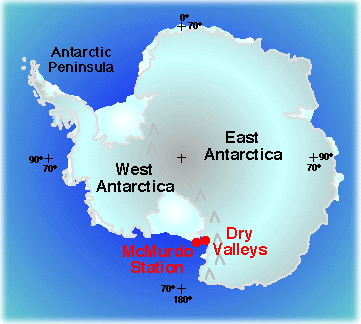
|
|






Hi Everyone,
I'm Paul D. Jones the longtime science teacher from Montezuma, Iowa. When I
say long time, I mean just that. This Fall will be my 36th year, all
here in Montezuma teaching Biology, Chemistry and Physics in the same
room. Montezuma Community High School is a mid-size school (61 seniors this year) in the flat farm land of east central Iowa.
As a little introduction, my family consists of a wife of 31 years, Sandy, who is buyer for Montezuma Manufacturing, a 24 year old son Mark, a business man in Cedar Falls IA. and a 19 year old son, Kevin, a sophomore. in Horticulture at Iowa State in Ames. We are an active family and are just beginning to wind down from all the high-school events that the boys were doing.
While my teaching career has been here in Montezuma, I have parcticipated in many Teacher Enhancement Projects from coast to coast and even off the coast doing "SEA Experience" a few summers ago. This project "Teachers Experience Antarctica" is my most ambitious undertaking and I am really looking forward to November when my "on the ice" time arrives.

McMurdo Dry Valleys: A Cold Desert Ecosystem
Investigator: W. Berry Lyons,
University of Alabama at Tuscaloosa
I spent my four weeks "on the ice" in the part of Antarctica called the Dry Valleys. Really, you could call my time "on the cold rocks". Most people think of Antarctica as a continent covered with ice and snow - and they are right! Only about 2% of the land is exposed. The Dry Valleys are the largest relatively ice-free area on the continent. My project involved studying what lives in these extreme deserts. Ecosystems in the Dry Valleys endure bitterly low temperatures, arid conditions, and salt accumulation. Life is pushed to its environmental limits here, yet organisms survive in the ice-covered lakes, short-lived summertime streams, and extremely dry soils.

Sampling near a meltwater stream in the Dry Valleys. Photograph
courtesy of B. Philips, TEA 1996/1997.
Scientists are studying ecosystems in the Dry Valleys because their biological systems are relatively simple, making it easier to trace interactions between the various components. They are one of the few places on Earth where minor changes in temperature and moisture can have such dramatic and immediate consequences. This area is a sensitive barometer to environmental change, and may be the first place in Antarctica where effects of climate change, whether natural or human-induced, will be observed.
My job was to help analyze glacial melt water. I measured how much sediment it was transporting and how much total organic carbon it was supplying to the delicate ecosystem. The life in these areas is dominated by microorganisms, mosses, lichens, and relatively few groups of invertebrates. The nutrients carried by the streams are supplied only for a very short time each year, because most of the time the glaciers are frozen solid. However, the short burst of nutrients may be extremely important to the organisms in the ecosystem. Higher forms of life are virtually non-existent. Our studies will help us understand how transport between the lakes, streams and terrestrial biota modifies the ecosystem.

Paul's field experience will take him to the Dry Valleys. The valleys are within helicopter-distance from McMurdo Station.

The Dry Valleys are a unique environment in Antarctica. Unlike other
valleys, their lower reaches are not filled by ice, and may not have been
for millions of years.

December 1997
| Su |
Mo |
Tu |
We |
Th |
Fr |
Sa |
| -- |
1 |
2 |
3 |
4 |
5 |
6 |
| 7 |
8 |
9 |
10 |
11 |
12 |
13 |
| 14 |
15 |
16 |
17 |
18 |
19 |
20 |
| 21 |
22 |
23 |
24 |
25 |
26 |
27 |
| 28 |
29 |
30 |
31 |
-- |
-- |
-- |
November 1997
Return to top of page
|









